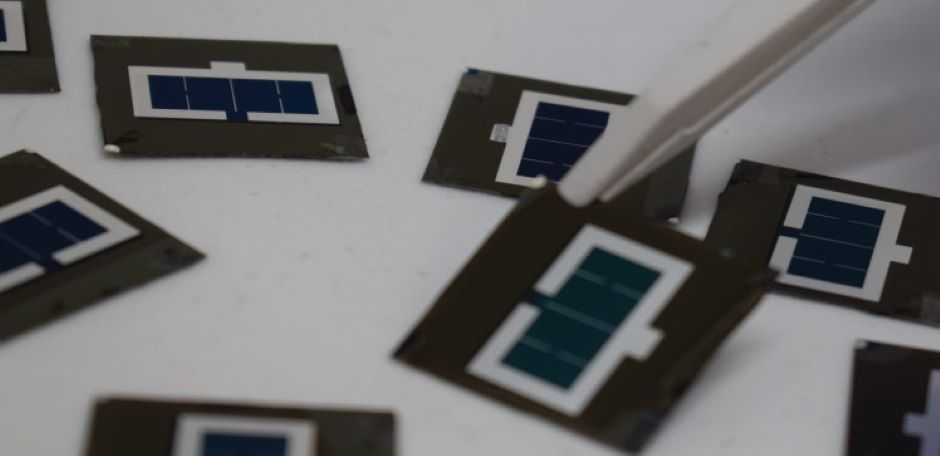
To enable the high power-conversion efficiency, the team developed new materials to extract an electrical charge from the silicon side while maximising the amount of incoming light reaching the perovskite layer. The development is said to open multiple new routes for further gains in tandem cell performance.
PCE of solar panels improved by lower temperatures
KAUST team roll on with solar perovskite production
Tandem solar cells combine two light-harvesting materials in one device, potentially generating significantly more electricity than a conventional single-junction silicon solar cell for a small additional cost.
“Silicon-based tandem solar cells have been identified as the ultimate long-term technology to further enhance solar panel power conversion efficiencies,” said electrical engineer Stefaan De Wolf, who led the study. “We, therefore, focus on this technology.”
The team’s findings are published online in Energy & Environmental Science.
When semiconductors such as silicon and perovskites absorb light, electrons are collected at “n-type contacts” on one side of the material, and positively charged holes are collected at “p-type contacts” on the opposite side, explained Erkan Aydin, a research scientist in De Wolf’s group.
In single-junction thin-film perovskite solar cells, the p-side usually faces uppermost, an arrangement known as the n-i-p structure. These cells recently exceeded efficiencies of 25 per cent. “However, perovskite/silicon tandem solar cells are usually in opposite p-i-n polarity,” Aydin said in a statement.
Inspired by recent gains in n-i-p single-junction perovskite solar-cell performance, De Wolf, Aydin, and their colleagues revisited n-i-p tandem cells to overcome the limitations that had previously hampered tandem solar cells with this structure. The key hurdles had been the lack of an efficient n-side contact material for efficient charge extraction and a sufficiently transparent p-side contact material to maximise the incoming sunlight reaching the light-harvesting layers in the device.
The team applied spiro-TTB, a transparent contact material, and improved the performance of the n-side layers of the device by developing a niobium oxide-based contact material that was chemical bridged to the perovskite layer.
“Overall, we allowed more light to be captured in the n-i-p tandem solar cell, and we converted the absorbed sunlight to energy more effectively thanks to our newly developed contacting materials,” Aydin said.
The team’s improved device is claimed to have achieved a power-conversion efficiency exceeding 27 per cent, an improvement over the 21.8 per cent efficiency of the previous best n-i-p tandem cell.
“Our agenda-setting results enable a new tandem device platform, from which we expect rapid progress to be achieved in the field of perovskite/silicon tandems in the n-i-p configuration,” De Wolf said.




Red Bull makes hydrogen fuel cell play with AVL
Formula 1 is an anachronistic anomaly where its only cutting edge is in engine development. The rules prohibit any real innovation and there would be...